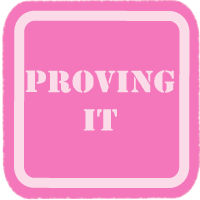
 Written Comprehension (reading) in the SL Classroom
Written Comprehension (reading) in the SL Classroom
 Reading is one of the branches of the tree and is something, therefore, that students must learn. It falls under the W branch, and is sometimes referred to as written comprehension. This key skill is vital in language development. Sometimes there is a feeling that reading is not as useful as speaking, but these skills are equally important. There are many advantages to developing reading skills and it is important that teachers know how to promote this development. In this section, we will examine why reading is necessary in the language classroom and how it should be structured.
Reading is one of the branches of the tree and is something, therefore, that students must learn. It falls under the W branch, and is sometimes referred to as written comprehension. This key skill is vital in language development. Sometimes there is a feeling that reading is not as useful as speaking, but these skills are equally important. There are many advantages to developing reading skills and it is important that teachers know how to promote this development. In this section, we will examine why reading is necessary in the language classroom and how it should be structured.
 \
\
Why is reading needed in the SL classroom?
Reading is a key component of learning a second language and it is without a doubt important as a language does not consist solely of the spoken word. There are many benefits to developing excellent reading skills in the target language; one benefit is the culture that one gains by reading in the target language. Through reading, students gain access to literature written in the target language. This literature shows the students what authentic materials in the target language look like as well as provides them with insight into the cultural beliefs and values.
Another benefit of reading is that it contributes significantly to the development of that target language. Students are exposed to complex and authentic forms of the language through their own process of noticing; it might not happen right away, but as a student develops more in the language, then more complex forms will be noticed through reading. Krashen also advocated the promotion of reading as it provides students with signifcant amounts of comprehensible input; the greater the amount of comprehensible input students were exposed to, the greater their language development.
A third benefit of reading is that it develops different competences in the language:
- Linguistic competence: Students gain knowledge about specific elements of language such as vocabulary and grammar
- Discourse competence: Students are exposed to the structure of texts and how they are put together
- Sociolinguistic competence: Students learn about different texts and structures in the target language and just how those are used in a particular culture
- Strategic competence: Students gain insight into different linguistic learning strategies. For example, a top down strategy might be emphasized, where students would used the general meaning of a text to determine its specifics. A bottom up strategy, on the other hand, would focus on the specifics, such as specific words, and work its way up towards the general meaning
back to top
What are some strategies to assist in reading development?
Simply having students read is not enough to develop their reading skills. Below are some activities that can help students not only improve their reading skills, but approach the task of reading in a different way:
-
Previewing: Students review titles, headings, and photo captions to gain an idea of the subject matter.
-
Predicting: Students make predictions based on subject matter obtained from previewing and from the form used.
-
Skimming and scanning: Students read pieces of the text in order to confirm or refute predictions made and determine the main idea of the text and its structure.
-
Guessing from context: Students use prior knowledge of the subject and previous activities to guess at the meaning of certain words and sections
-
Paraphrasing: At the end of sections students stop to rephrase what they’ve just read in order to check for comprehension.
A teacher cannot expect students to know these strategies naturally; it is important to develop and teach these strategies in the classroom, whether explicity or implicitly. Some techniques for doing this are:
- Modeling the strategies aloud as a group
- Giving the students time ahead to preview the reading material
- Using fill in the blank (cloze) exercises to give the students a chance to focus on more difficult and key vocabulary
- Encourage students to reflect on strategies used and what other ones might have been useful.
For more information… http://www.nclrc.org/essentials/reading/stratread.htm
back to top
How should reading activities be structured in the SL classroom?
After learning the alphabet and the sound symbol relationship, reading lessons should have three distinct parts:
- Pre-Reading Phase: In preparation for reading, it is usually a good idea to discuss as a class the learners' experiences and knowledge relevant to the subject matter of the text before reading. This discussion enables a sharing or pooling of knowledge, introduces some relevant concepts and vocabulary and sets up expectations about the information contained in the text. Teachers may also need to cover key vocabulary and/or difficult structures before learners begin the reading task.
- Reading Phase: The reading task usually begins with a specific prediction or orientation activity. This activity may be done as a whole class, in groups, pairs or individually depending on the students’ ability level.
- Post-Reading Phase: After reading there is a need to follow-up students' understandings and perceptions.
back to top








